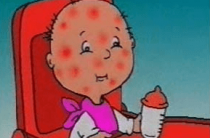An allergy to birch flowering is a characteristic reaction of the body when pollen, which is emitted by male plants, enters it during the flowering period. This disease is quite common, making up one of the most common variants of allergies. Residents of large industrial cities are especially often allergic to birch pollen.
The immune system of residents of large cities suffers as a result of the negative influence of industrial pollution factors, exhaust gases, excessive use of cosmetics and household chemicals. As a result of exposure to these factors, a negative reaction occurs on the part of the immune system, which is characterized by the manifestation of allergies.
An allergy to birch pollen is dangerous because this plant has a very intense flowering, with the release of a large amount of pollen into the air, which is easily carried by the wind. Even if birch trees are not found near the place of residence of a patient with this allergy, this does not mean at all that there is no flowering of this plant in the air.
Why there is an allergy to birch
An allergy to birch blossoms occurs as a result of the sensitivity of the patient's immunity to certain protein components that make up the pollen. The patient's body produces special antibodies that combine with the proteins that make up the birch blossom and a reaction occurs from the patient's immunity. In most of the middle zone, birch bloom occurs in late April - early May. For an allergy to birch flowering, the seasonal dependence of the onset of symptoms is characteristic, on the appearance of pollen from this plant in the air. After the period of birch pollination is over, there is a gradual decrease in allergy symptoms.
Symptoms of Birch Pollen Allergy
allergic rhinitis
Allergic rhinitis is defined as a set of inflammatory processes of allergic genesis that occur within the nasopharynx. The occurrence of allergic rhinitis is associated with a special mechanism of immediate immune response. Symptoms of allergic rhinitis occur within a few minutes, after birch pollen infiltration, along with breathing.
Allergic rhinitis with an allergy to birch pollen is manifested by: vasodilatation of the nasal sinuses, causing nasal congestion and problems with nasal breathing, constant runny nose and sneezing, while discolored, odorless contents are released. The tip of the nose constantly itches, irritation is felt in the sinuses. Tobacco smoke or smoke from a fire, household chemicals and perfumes, polluted air and car gases, although they are not allergens in this disease, increase the negative symptoms of allergic rhinitis.
Allergic conjunctivitis
Allergic conjunctivitis is an inflammatory process that occurs in the eye cavity, as well as adjacent skin. Symptoms of allergic conjunctivitis appear very quickly, often already 30 seconds is enough for symptoms to develop, from the moment birch blossoms get into the eyes. The eyeball has a permeable mucous membrane, due to which birch pollen allergens immediately come into contact with local immunity.
As a result of this, the antibody is connected to the allergen, which, acting on mast cells, provokes the local release of histamine. This ends with the following symptoms: irritation of the mucous membrane of the eye, constant tearfulness, redness caused by the expansion of local blood vessels, fear of light, pain in the eyes and other unpleasant sensations.
These symptoms often appear together, with an allergy to birch flowering. They are characterized by a strict dependence on the seasonal flowering of the plant - the allergen. The immunity of the patient, with an allergy to birch flowering, is strictly specific to the proteins that are present in the pollen of this plant.
Diagnosis of allergy to birch pollen
In some cases, it is impossible to trace a strict relationship between the ingress of an allergen and the development of an allergic reaction. This may be due to the fact that birch blossoms occur together with other wind-pollinated trees, which under certain conditions makes it impossible to accurately identify the allergen. In this case, it is necessary to carry out special diagnostic methods:
Scarification tests
This type of test works great for allergies to plant pollen. To do this, on the surface of the skin, in various ways (using a scalpel, applying a bandage, subcutaneous injections). At the site of contact with the allergen, an allergic reaction develops, which involves redness, swelling, blistering and other dermatological manifestations that are localized at the site of skin contact with the allergen.
The disadvantage of this method is the need for patient contact with the allergen, which is fraught with the occurrence of allergic complications.
Scarification tests are not carried out in children under the age of 3 years, the elderly, pregnant women. If you are allergic to birch pollen, they are not carried out immediately at the time of flowering, since this period is characterized by the development of complications, at which time contact with the allergen is contraindicated. Blood test for antibodies
To diagnose an allergic reaction to birch flowering, in case of contraindications to the use of scarification samples, special blood tests are performed. This diagnostic method involves measuring the level of general antibodies and special ones. Antibodies are proteins that are sensitive to allergens, thereby causing allergic reactions. This analysis is carried out by diagnosing blood activity outside the human body, and in laboratory conditions, therefore it is safe.
Treatment of birch pollen allergy
Allergy to birch blossoms is treated with immunotherapy, preventive measures, as well as the use of medications to relieve symptoms. When choosing medications for the treatment of symptoms of mild to moderate severity, preference should be given to agents for local use: drops and sprays for the nose, drops for the eyes.
Immunotherapy
This type of therapy for birch allergy is one of the most competent therapeutic solutions for numerous patients. Unlike drugs or avoidance of the allergen, which either eliminate allergic symptoms. Immunotherapy affects all areas of the allergic reaction, dulling the body's sensitivity to the influence of the allergen. It allows you to eliminate the pathological immune response and achieve long-term remission of allergic symptoms.
Immunotherapy is carried out with the help of a constant, over several months, injection of a solution of allergens obtained from birch blossoms. It can be carried out all year round, except for the time when the birch blossoms.
Medical treatment
Histamine H1 receptor blockers are used to relieve allergy symptoms. These receptors are located on the surface of cells of the skin, nasopharynx, mucous membrane of the eye. When histamine interacts with these receptors, symptomatic manifestations of allergy develop. Histamine H1 receptor blockers are able to displace the histamine molecule and instead dock with H1 receptors, which is explained by their greater chemical affinity. At the same time, they are not able to act on the cell, so allergy symptoms do not develop.
Diphenhydramine is one of the first medications for the treatment of allergic reactions. Diphenhydramine - the active ingredient of diphenhydramine easily penetrates the brain, where it has a depressing effect, which is accompanied by weakness, decreased concentration, daytime sleepiness and a constant feeling of fatigue.
Diazolin is a drug that causes slight CNS depression. The active substance also has an effect on H2 receptors, which can increase the hypersecretion of gastric juice, which causes an increase in acidity.
Suprastin is a popular remedy that is suitable for quickly relieving the symptoms of allergic rhinitis and conjunctivitis. Suprastin is often used, since antihistamine efficacy is maintained only during the first 5 hours.
Antihistamines, invented later, have much less activity in terms of penetrating the brain. For this reason, they almost do not cause CNS depression. Daytime fatigue, lethargy, weakness are very rare. Also, modern antihistamines do not affect other organs, so they do not cause dizziness, nausea, dry mouth and gastrointestinal upset.
Claritin is an effective and modern drug with a high degree of safety. It has a high degree of antihistamine activity, as a result of which the symptoms of pollen allergy are reliably eliminated.
Cetrin is an effective and safe drug. Metabolism is carried out by the kidneys, so it is not recommended for patients with renal insufficiency.
Prevention of allergy to birch pollen
Birch blossom allergy is a type of respiratory allergy. Prevention of this type of allergy is a standard measure against pollen allergy and includes the following measures:
- At the time of birch flowering, try to move to the climatic zone where this plant is not common.
- In the house, wet clean as often as possible to avoid the presence of allergens in the house;
- Install special barrier nets on windows;
- Start taking antihistamines, as prescribed by a doctor, a week before the expected flowering of birch;
- Use special filters to purify the air in the room and air conditioners. At the same time, flowering will settle on special filters that need to be changed more often than with normal use. It is better that people who do not suffer from allergies do this.
- Use special respirators and sunglasses to prevent flowering while walking;
- Refrain from walking when it is dry and windy;
- Rinse your sinuses with a special saline solution to rid the nasal cavity of the accumulation of allergens.
We remind you that this article is a reference material, and not a guide for self-treatment. It is possible to engage in diagnostic and therapeutic measures only under the supervision of an experienced specialist in the field of allergology















